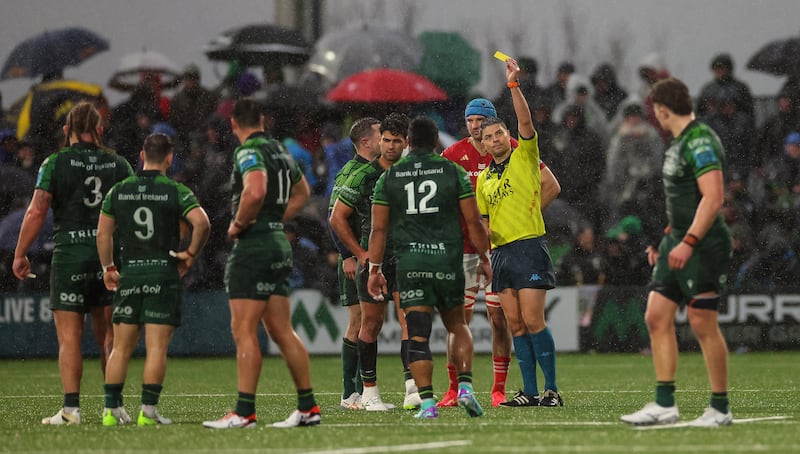When Munster’s Jack O’Donoghue was carried off on a stretcher in Galway, Dan Leavy suddenly came to mind.
Remember him? Just in case you don’t, he was on the way to becoming one of the finest players ever to pull on the number seven jersey for both Leinster and Ireland, packing down in the back row for Ireland’s 2018 Grand Slam. Having come on for the injured Josh van der Flier in the opening match against France, Leavy remained at 7 for the next four matches, playing the full 80 minutes in all of them.
It was easy to agree with the many cognoscenti who were predicting that Ireland would soon have its own Richie McCaw, but we were to be denied. Leavy’s career would soon be brought to a shuddering halt.
Just one season later, in 2019, Leinster’s Heineken Cup quarter-final against Ulster, at the Aviva Stadium saw the beginning of the end. A heavy side-entry on to Leavy’s knee inflicted terrible damage. A few years later, having tried everything possible to get back to where he had been, Leavy retired.
Against Connacht, O’Donoghue was fixed over the ball in a perfectly legal jackler position when the home team’s Australian wing, Byron Ralston, side-entered the breakdown, forcefully connecting with the Munsterman’s knee joint and causing what looked to be a serious injury. Hopefully, it is not in the same category as Leavy’s. Only time will tell.
World Rugby have been conscious of the growing number of serious cruciate knee injuries caused by this type of action and Leavy’s case was far from being an isolated incident. So, after a rules trial in 2021, they tightened up the laws of the game to outlaw it in no uncertain manner. The written words are unequivocal: “A player may lever the jackler out of the contest at the ruck but must not drop their weight on to them or target the lower limbs.”
[ Gerry Thornley: Dan Leavy’s star shone so bright but all too brieflyOpens in new window ]
It would of course be unfair to suggest that Ralston deliberately committed foul play and his actions could not be described as intentional – but neither should it be considered accidental. It could come under the term “reckless”, which is used when it is considered that “the player knew (or should have known) that there was a risk of committing foul play in acting as he/she did”.

The outcome of this incident was a yellow card for the perpetrator, which, in my opinion, was the wrong colour. The rationale for the decision, very clearly explained by referee Chris Busby, was that Ralston was attempting to grasp O’Donoghue and that his arm was not “tucked”. In the main, these are reasons to mitigate dangerous tackles, and are surely not applicable for this type of clearout.
The above law could hardly be clearer and the yellow call, agreed by Busby’s assistant Andy Brace and TMO Mark Patton, needed to be of the red variety, even irrespective of side-entry. But I want to be clear. Busby is a referee with high potential and this match, even this decision, doesn’t change that fact. It’s all part of the important, unceasing, learning curve.
The incident confirms my concern that referees have become pretty lax at the breakdown and seem reluctant to whistle up clear and obvious offences, probably in the interests of keeping the game going. But that is misguided – it is not their job to do so. While referees can potentially ruin a match, they cannot create a good one – that is down to the players, and the players alone.
Attempts to keep things flowing by allowing too many bodies on the floor tend to be counterproductive – slow ball is no-ball, it just provides more kicking. It also does not follow that more penalties come when a referee is strict around the breakdown. Players will change their behaviour if they know that the official is sticking to his guns and that will be much more likely to produce the much desired fast ball.
Match officials can either accept error, learn from it, and ensure that it doesn’t happen again; or, find a way to explain it. In this case the latter, which is not unheard of, can’t really be an option. The two offences by Ralston, side-entry and crashing into O’Donoghue’s leg, were too obvious. It would also give a signal to other officials that a similar incident should be handled in the same way. And that should not be the case.






